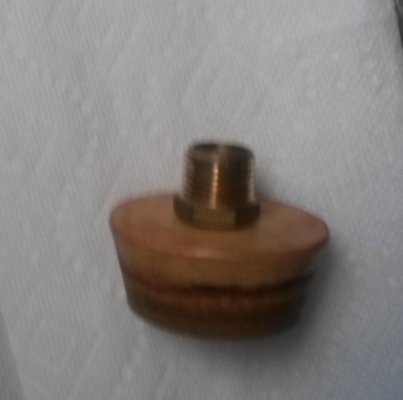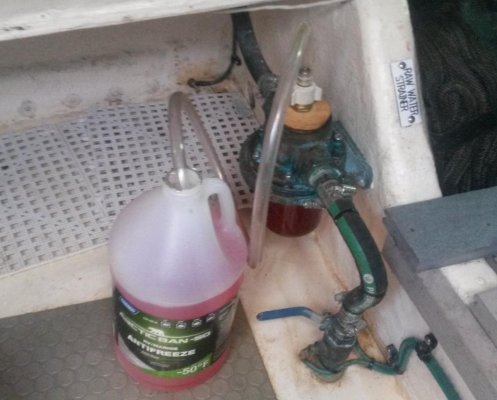Having stored boats for many years on the hard in a place that gets to -50F on a regular basis, my number 1 words of wisdom is to make a complete winterizing list that you refer to every year when winterizing, to make sure that you do not forget anything. Check off every item when completed, then, when it is the middle of winter and the thought of "did I winterize X", a quick look at your list with a check mark will alleviate your fears.
Start with identifying EVERY place where water HAS been. Engine, Sea water lines, Fresh water lines, Bilge etc.
If the engine and gen set are fresh water cooled, check the antifreeze freeze point.
Flush the engine and Genset with fresh water,
Drain everything, Does the boat have a lift muffler, if so, does it have a bottom drain.
Use Polypropylene Glycol (RV Antifreeze) -100 if possible. (-50,will slush at +12F , but will have burst protection to -50F. -50 is most likely a 40/60 diluted mix with water, while a -100 would be a 60/40 mix).
Run the engine and pour the RV antifreeze into the sea strainer (with the thru hull closed and the water removed) or install a bronze (Groco) 3-way valve. Record how many gallons of Antifreeze it takes before it runs out of the exhaust port, so that you will know quantity for next year. ( If the lift muffler has a drain, and/or remaining antifreeze in the sea strainer, this "used antifreeze" can be then be used for the black water system.)
Repeat for Gen Set.
Drain the fresh water tank. Again a 3-way valve will make it easier if you plan on doing this in following years.
Drain the water heater and install a water heater bypass from the cold to hot lines. ( 3-way valves)
Drain all in-line filters.
Install a port ( 3-way valve) just aft of the fresh water pump and used compressed air, adjusted to no more than 40 PSI, to blow all lines. Start with the spigot/faucet that is the farthest away. Fresh water bow wash down maybe, and repeat for every faucet (both hot and cold) heading back to the pump, Do not forget the toilet if it is a fresh water flush. Drain all inline filters again. List every faucet outlet, filter etc. on your list for check off.
Make sure that the line from the tank to the pump is totally drained, filters etc. Make sure that the pump is drained or add a port upstream of the pump and run antifreeze through the pump.
Dishwasher, Washing Machine, Ice maker etc.
Do not forget the windshield washer if it is plumbed into the fresh water system.
Repeat for Sea water pump, do not forget toilet if sea water flush.
If you feel that you blew the lines well enough, OK. OR, repeat the blow out procedure using a little RV Antifreeze to make sure. I made a canister that installs between the compressor air hose and the inlet at the water line, that I can add some antifreeze into and repeat blowing all of the blow previously blown outlets.
Winterize water maker and pumps.
Make sure all sea water strainers are drained and remove water from bilge.
With the "used" antifreeze from the engine, pour some into toilet, both to tank and overboard. Do not forget macerator.
Add a little "used" into all sea strainers and bilge. If any sinks have a trap, pour in "used". Bath drains and pump out sump etc.
Blow all deck drains in case there is a water trap.
Open all thru hulls.
Keep the current year checked off list on board for reference later.
In the spring, use list to commission.
Hope this helps.


